There is a new survey of Vietnamese history that has just been published. It is a book by Yale professor Ben Kiernan called Việt Nam: A History from Earliest Times to the Present (Oxford, 2017). Kiernan does not know Vietnamese [Correction: I’ve been informed that Kiernan does know some Vietnamese. However, this book does not cite Vietnamese sources, only Vietnamese sources that have been translated into English or French.] or classical Chinese, but he has read a lot of what has been written about Vietnamese history in English, and he has taught about Vietnamese history for many years.
His book therefore can be seen as an effort by an educated person to try to make sense of the extant English-language scholarship on Vietnamese history. His conclusions, I would argue, can in turn enable people who specialize on Vietnamese history to gain a sense of how well they have been able to educate readers about the Vietnamese past.
Let’s take a look at this issue by examining a point that Kiernan makes about the Ming occupation period in the early fifteenth century. On page 198 of his book, Kiernan states the following:
“. . . the war against the Ming occupation had polarized ethnic distinctions that were already linked to historical myth. A Đại Việt writer rejoiced: ‘The soil is again the soil of the Southern kingdom. The people are again the people of the Việt race. Coats and skirts and customs are in agreement with those of the past. The moral and political order is re-established as of old.” (198)
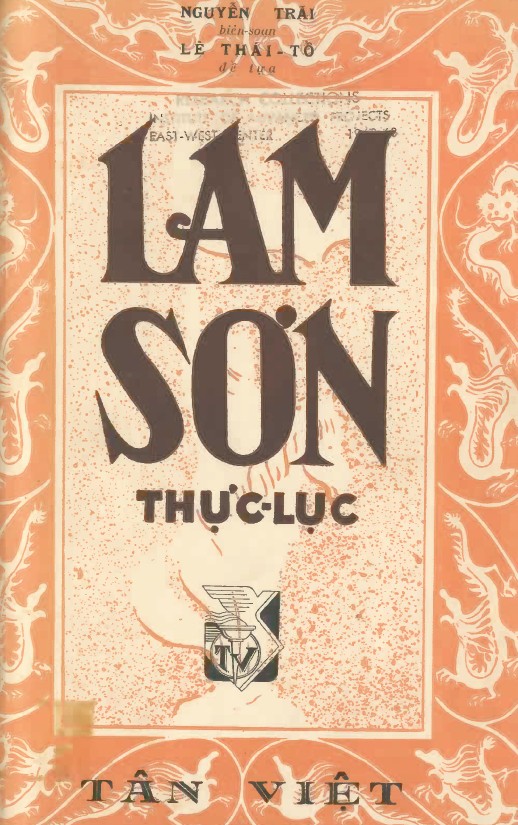
I have never thought of the war against the Ming as polarizing ethnic distinctions, but Kiernan has a quote from this period in which someone is talking with pride about “the Việt race,” and such statements of pride about one’s own group usually mean that one is simultaneously looking down on some other group of people. So where does that quote come from?
The footnote says “Lam sơn thực lực, quoted in Alexander B. Woodside, Vietnam and the Chinese Model (Cambridge, MA: Harvard University Press, 1971), 21.
The Lam sơn thực lực [Veritable Records of Lam Sơn] is a text that was written in the 1430s, and it is about Lê Lợi’s successful effort, shortly before that point, to drive the occupying Ming Dynasty forces out of the country and to restore autonomy. It is not clear who the author (or authors) of this work was (or were), but some people attribute this text to the scholar-official, Nguyễn Trãi.
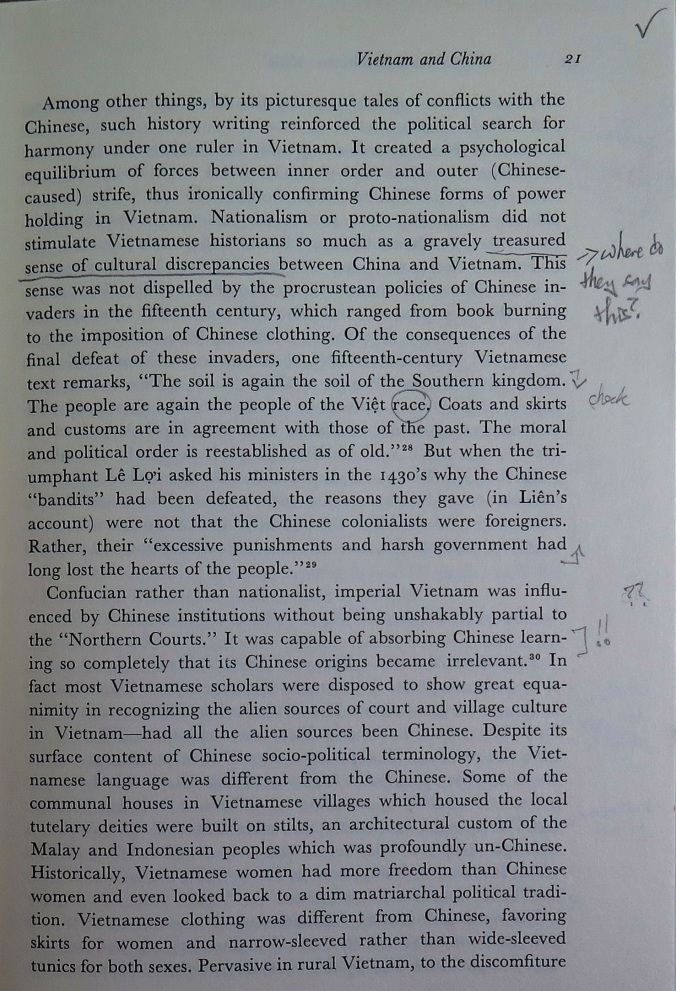
I then checked Woodside’s book. I first read Vietnam and the Chinese Model around 1994 as a graduate student, when I was still in my 20s. At that time I made comments next to the text, and when I opened the book today, I saw that on the page where this quote appears I had circled the word “race” and had written “check.”
Apparently I already understood at that early stage of graduate studies that the concept of race was a Western concept that was adopted in places like China and Vietnam around the turn of the twentieth century, and that therefore something must be wrong with this translation.
I do remember reading Frank Dikötter’s The Discourse of Race in Modern China (1992) early in my graduate career, so perhaps I had already read that book by that point in time.
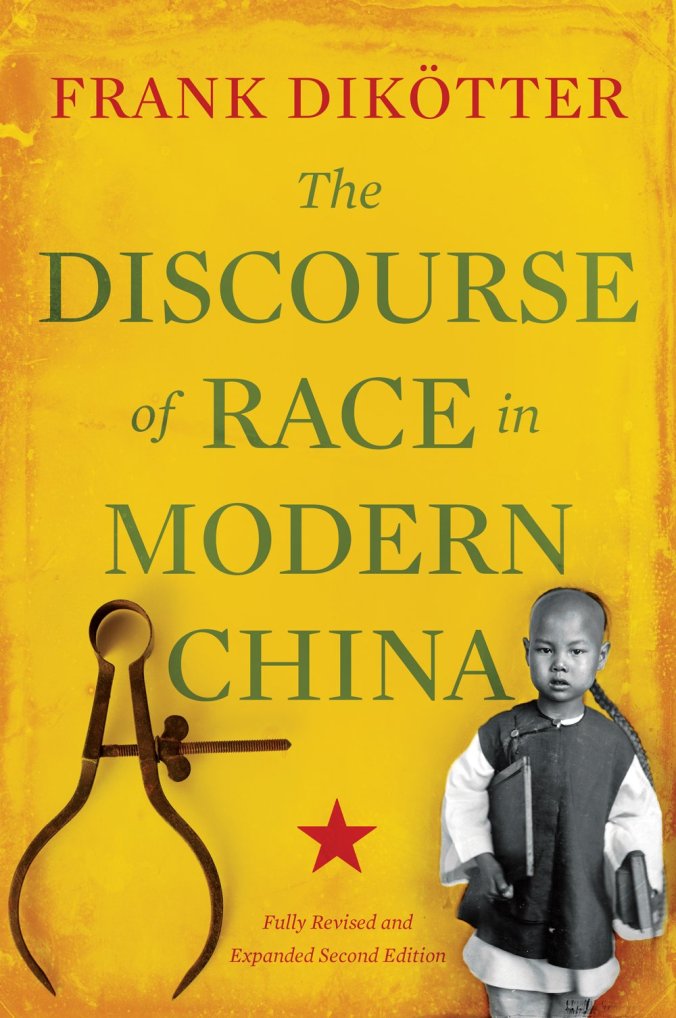
I don’t recall ever checking this before, so today I decided to do so. It turns out that Woodside did not directly quote the Lam sơn thực lực. Instead, the footnote for this quote states: “From the Lam sơn thực lực, quoted and translated into modern Vietnamese in Hải Thu, ‘Bàn thêm về thái độ của Nguyễn Trãi đối với nhân dân lao động,’ NCLS, 85: 24-29 (April 1966).”
In other words, Woodside translated a quote from the Lam sơn thực lực that appeared in an article in the North Vietnamese journal, Nghiên cứu lịch sử [Historical Research] that had been written by a scholar by the name of Hải Thu. This article was entitled “Further Discussion about Nguyễn Trãi’s Attitude towards Workers.”
Nguyễn Trãi was a scholar official in the fifteenth century whom some people think may have written the Lam sơn thực lực. While it is not clear if Nguyễn Trãi did in fact write that text, his other writings, all of which reflect his position as a member of the elite, make it clear that he never wrote about “workers” (nhân dân lao động). As such, this article is not a work of serious historical scholarship, but instead, is a piece of Marxist historical propaganda.
However, it does include the quote from the Lam sơn thực lực that Woodside translated. That passage was quoted from a translation of the Lam sơn thực lực that a man by the name of Mạc Bảo Thần had first made in 1944 or 1945. The passage from that translation that Hải Thu cited in his article was the following:
Đất cát lại đất cát nước Nam! Nhân dân lại nhân dân giống Việt! Áo xiêm phong tục đúng như xưa! Nề nếp mối giềng lại sang như cũ (bản dịch của Mạc-bảo-Thần).
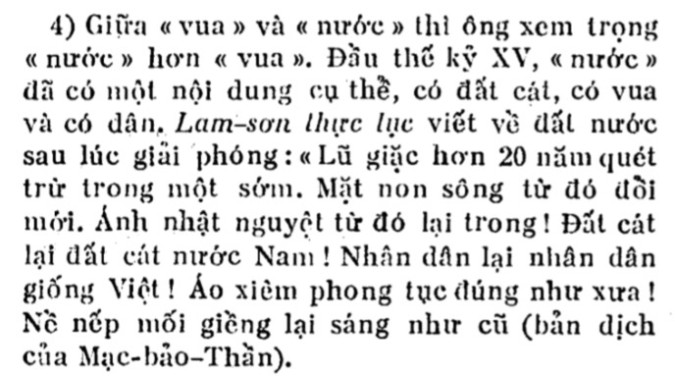
Woodside’s quote – “The soil is again the soil of the Southern kingdom. The people are again the people of the Việt race. Coats and skirts and customs are in agreement with those of the past. The moral and political order is re-established as of old.” – is more or less a faithful translation of these sentences. What is more, the expression, “the Việt race” (giống Việt), does indeed appear here. But again, that term is a modern term. It could not have appeared in a fifteenth century text. So what does the original classical Chinese version of this text say?
At the moment I only have access to a couple of versions of this text (one held in Paris and the other in Tokyo), and they both contain the same information: 土地復安南土地,人民復安南人民。風俗衣冠,得以復正,綱疇統紀,得以復明矣。
“The land is again An Nam’s land. The people are again An Nam’s people. The customs and caps and gowns have returned to orthodoxy. The moral rules of governance are again illuminated.”
Hmmm. . . there is absolutely nothing here about “the Việt race.” Instead, this text uses the “Chinese” name for the region – An Nam. So why is Mạc Bảo Thần’s translation so different?
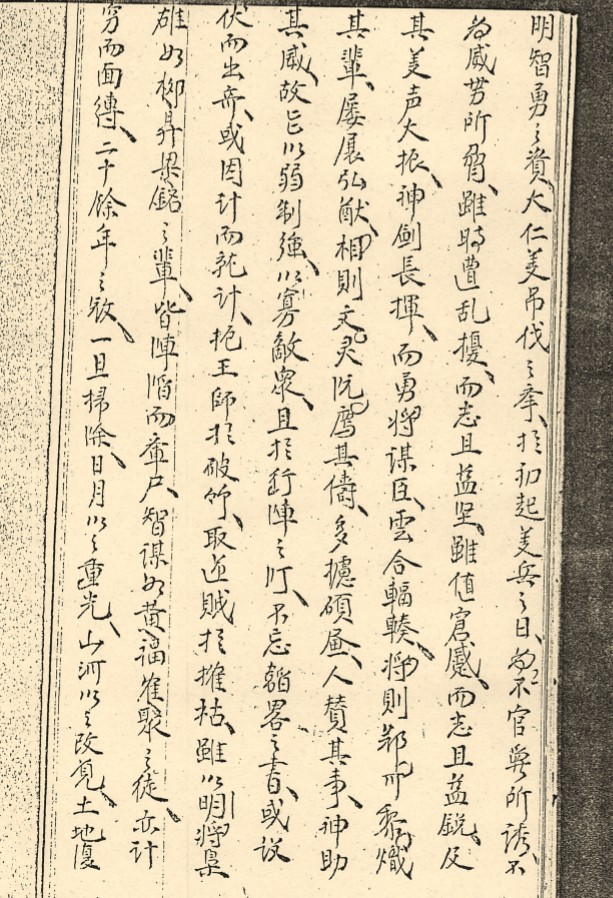
Mạc Bảo Thần was a pen name that was used by a man named Nhượng Tống. Nhượng Tống (1904-1949) was raised in a family of Confucian scholars in Nam Định. He was one of the founding members of the Vietnamese Nationalist Party (Việt Nam Quốc Dân Đảng). He was arrested by the French and was sent to Côn Đảo prison from 1929 to 1936.
In 1944-45 Nhượng Tống published numerous works. Some were translations of ancient Chinese texts and others were on nationalist topics, such as a book about the founder of the Vietnamese Nationalist Party, Nguyễn Thái Học.
It is in this context that he published his translation of the Lam sơn thực lực, a work that was republished in Saigon several times in the 1940s and 1950s.
Nhượng Tống, meanwhile, was assassinated by the Việt Minh in Hanoi in 1949.
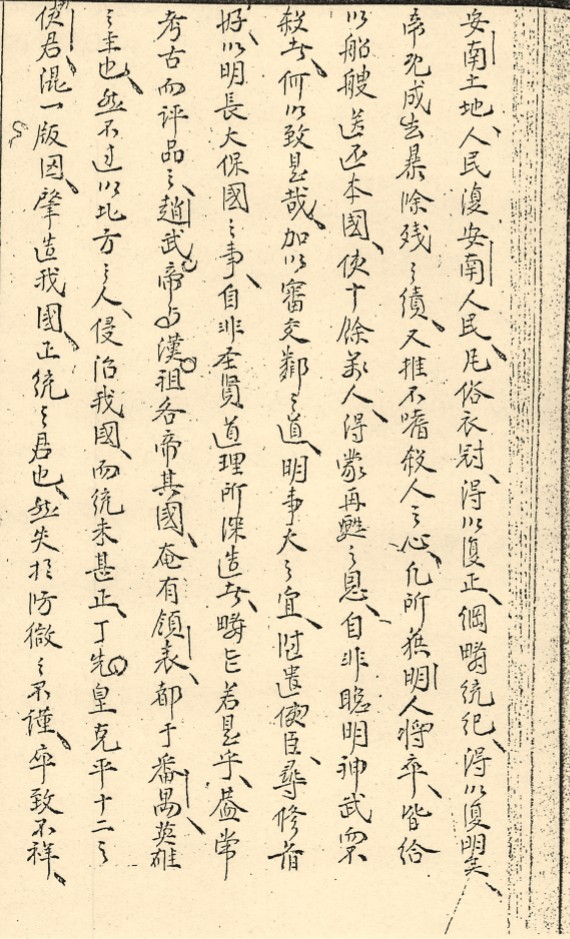
Given his nationalist outlook, we can understand why Nhượng Tống would translate “An Nam’s people” as “the Việt race.”
While we can find premodern Vietnamese authors using the term “An Nam” in a neutral sense to refer to their land, twentieth-century Vietnamese nationalism turned “An Nam” into a “dirty word” that made some Vietnamese think of Vietnam’s humiliating position as a colony of France in the present, and its supposedly equally humiliating position as a vassal of China in the past.
However, the person who wrote in the fifteenth century about “The land is again An Nam’s land. The people are again An Nam’s people,” did not have the same problem with the term “An Nam.”
Nhượng Tống’s problem was a modern problem, and he solved that modern problem by replacing the old term “An Nam” with a modern term – “the Việt race.” In doing so, however, he completely distorted what was originally written in the Lam sơn thực lực.
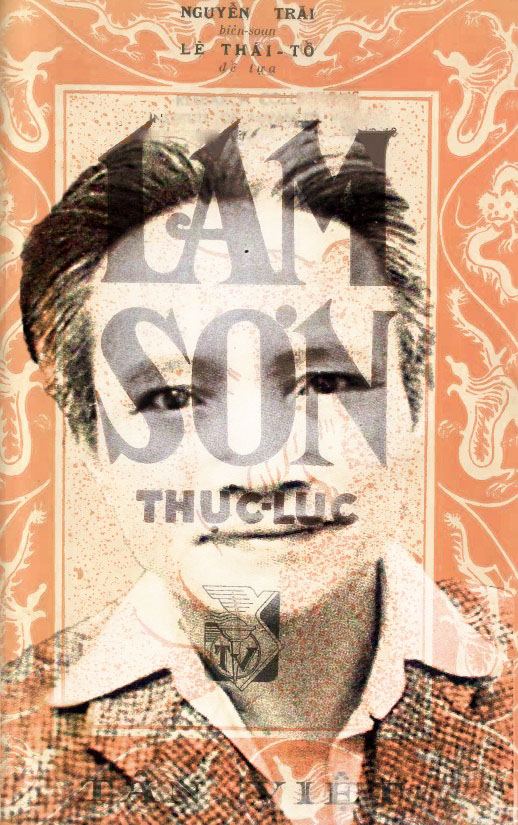
So the nationalist, Nhượng Tống, made a bad (nationalistic) translation of a premodern text in the 1940s and mentioned “the Việt race” when there was no such expression in the original text, the fifteenth-century Lam sơn thực lực.
In the 1960s, Hải Thu, someone who was on the opposing political side of Nhượng Tống’s world, cited Nhượng Tống in a bad (Marxist propaganda) piece of writing.
At some point later in the 1960s, Alexander Woodside, a young scholar who was examining a topic that no one in the English-speaking world had examined before, and which no one in the English-speaking world could help him with, included in his book the bad nationalistic quote about “the Việt race” that he found in a lousy Marxist propaganda piece.
Decades later, a senior scholar who is not a specialist on Vietnam cited Woodside’s second-hand quote about “the Việt race” to argue that “polarizing ethnic distinctions” emerged during the Ming occupation period in the early fifteenth century.
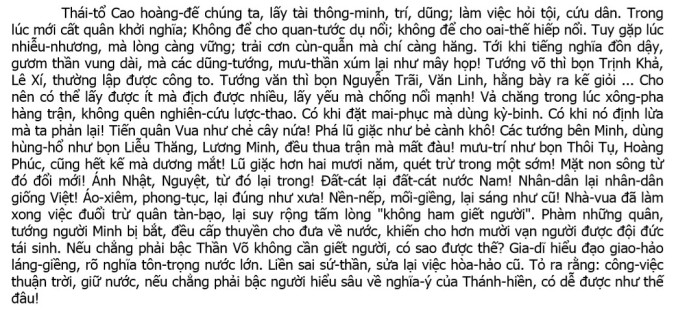
What we have here is a phenomenon that I think we can call “textual drift.” The meaning of this passage in the Lam sơn thực lực has “drifted” over time, as one scholar after another has failed to actually consult, or be honest with, the original text.
Nhượng Tống distorted the original text for nationalist purposes. Hải Thu did not check (or could not check) Nhượng Tống’s distorted translation, and simply used it to make a point about something which that text does not talk about: Nguyễn Trãi’s view of workers.
Woodside did not check Nhượng Tống’s distorted translation and cited it to make a point about the history of the Sino-Vietnamese relationship.
Kiernan has no ability to check Nhượng Tống’s distorted translation and used it to write about “polarizing ethnic distinctions” that supposedly emerged in the early fifteenth century in Vietnam.
With every scholar, we “drift” further and further away from the meaning of the original “text.” That is “textual drift,” and as long as people cannot, or do not, read original texts, we are going to continue to drift further and further and further away from the past.
This happens a lot, which is why it is essential to go and check the original Chinese. I found things that were translated into English as being about the Vietnam area, that were actually referring to Hainan in the original text, I suspect reliance on twentieth century Vietnamese translations of Classical Chinese was to blame, but I never did get to track the intermediary translations down.
Thank you very much. I encountered this post via twitter.Your post is timely, as I saw the book at the Toronto AAS and was thinking of having the library of my undergtaduate college purchase it. I did not realize that the author knows neither Vietnamese nor Classical Chinese. That seems disquaifying to me.
Was Mr. Woodside able to read Chinese back then? As his book was a monumental one about Vietnam and the Chinese Model – and with his name – one should be safe to assume that such was the case. So Mr. Kiernan probably has a better excuse than Mr. Woodside for not checking the source, and for relying on a renowned scholar rather than a “lousy Marxist propaganda piece”.
There is a very nice article about Prof. Woodside that was published in the Harvard Crimson (the student newspaper at Harvard) in 1975:
http://www.thecrimson.com/article/1975/5/23/the-war-in-the-classroom-pprofessors/
It talks about his training. He started studying Chinese in 1960. So yes, he did have the ability to check this source, and the published translation by Mạc Bảo Thần which apparently includes the classical Chinese text may have been available in the Harvard Library. However, I don’t think we can be too tough on Woodside at that time. The dissertation/book he wrote at that time was a pioneering work of premodern Vietnamese history. The quote that we are talking about here is in a section of essentially background information. He was trying to “paint a picture” of Sino-Vietnamese relations as he understood it.
Rather than blame earlier generations of scholars, what people today need to realize is that there are MANY reasons why the scholarship of earlier generations of scholars is problematic. In North America, for instance, the field was very small, and the level of linguistic ability varied from one person to another. The work they did was also “pioneering” in that they all wrote about topics for the first time (and there was no one around to check their work).
So while there can be good points that scholars like Woodside, O. W. Wolters, Keith Taylor, John Whitmore, etc. made in the past, as the “first wave” of scholarship on premodern Vietnamese history in North America, all of their work still needs to be “re-checked” and “re-examined” alongside an examination of the primary sources.
As for Vietnam, there are all kinds of things there that distorted scholarship in the 2nd half of the twentieth century: nationalism, Marxism, anti-Chinese sentiment, poor linguistic skills, etc. So like the scholarship from North America at that time, Vietnamese scholarship also needs to be “re-checked,” “re-examined,” etc.
Today there is a group of young scholars in Vietnam who work on the premodern period who do have good linguistic skills and who do “re-check” and “re-examine” what has been written before (Nguyễn Tuấn Cường, Nguyễn Tô Lan, Trần Trọng Dương, Trần Quảng Đức, and more on the way), so when they cite a source, you can generally be confident that what they say is accurate.
As for North America, there hasn’t been a similar wave of young people who have emerged to “re-check” the scholarship on premodern Vietnamese history of earlier scholars. There are young scholars who have “looked over the border” from Chinese history (Kate Baldanza, Erica Brindley, Catherine Churchman) who do great work, but not many “self-declared Vietnamists” who have the same skills (Bradley Davis fits, but is working on the premodern-modern transitional period in the late 19th century. John Phan is very good, but so far works more in linguistics/language/literature areas).
Therefore, for many years to come (actually, probably forever), premodern Vietnamese history (both in Vietnamese and in English) is going to continue to be a “problem.” Kiernan is not an expert, but he has written a book that covers premodern Vietnamese history. Meanwhile, there are MANY, MANY Vietnamese authors who have no ability to read premodern sources but who also publish books on premodern Vietnamese history. . .